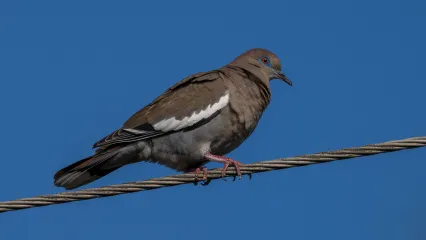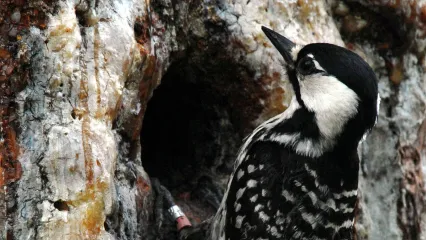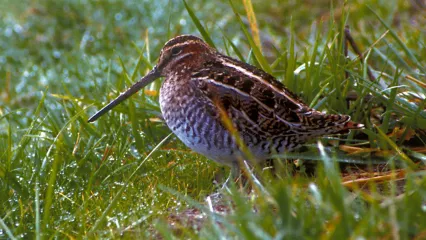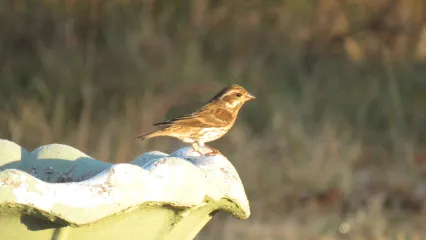
Description
If you look to the sky in Oklahoma around the month of September, you will likely catch sight of a mourning dove in flight. However, there is another species of dove that is becoming more prevalent in the sky above the state. The white-winged dove (Zenaida asiatica) is becoming an increasingly common sight in Oklahoma.
Hailing from Texas and Central America, these doves used to only make it to southwestern Oklahoma in appreciable numbers. Now, these doves can be found throughout the state. The white-winged dove is generally a migratory bird that spends the winter months in Mexico and other parts of Central America.
The diet of these birds consists of seeds, grains and fruit. They can be found feeding on harvested crop fields and eating cactus fruit in the Sonoran Desert. They will also come to birdfeeders, dropped food scraps, berries and acorn trees.
Size
The white-winged dove has some differences in color and size when compared to the mourning dove. The white-wing's body is larger, and it has a mixture of black, brown and white on the wings.
Habitat
In summer, white-wings will fly into hot and arid climates to mate and nest. They can also be found in wooded and agricultural areas. White-winged doves often congregate in more residential areas and in cities, possibly attracted by birdfeeders and artificial heating produced by cement and other hard surfaces.
Life Cycle
Male doves usually choose the general area for nesting, which is typically around a lake or stream in wooded areas. Then the females will select a specific spot in a tree. When the doves decide to nest in an urban area, they usually choose large shade trees such as pecan or ash trees. The doves construct their nests using twigs, weeds and grass, and it is the typical bowl shape. The females lay one or two eggs and incubate those eggs for 14 to 20 days.
How To Observe
In flight, these birds are easy to identify because of the white patches on top of the wings. The tails of the white-winged dove are shorter than the mourning dove and have a square shape.


